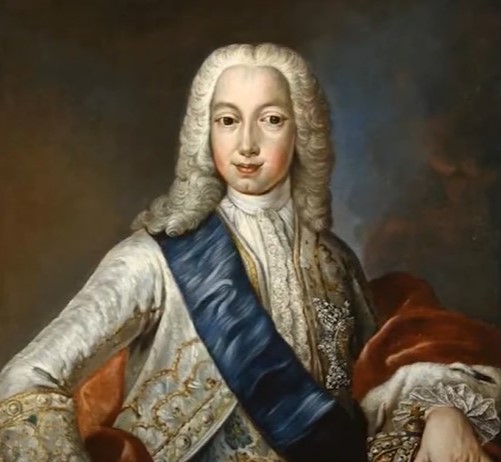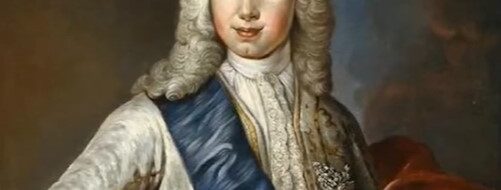PETER 3 RUSSIA

peter 3 russia
Peter 3 Russia – Peter 3 of Russia reigned as Emperor of Russia for a period of six months in the year 1762. Being the only child of Charles Frederick, Duke of Holstein-Gottorp, and Anna Petrovna, he was born in Kiel under the name Charles Peter Ulrich of Schleswig-Holstein-Gottorp. Peter, who was born in Germany, had a difficult time communicating in Russian and adhered to a policy that was largely pro-Prussian, all of which contributed to his lack of popularity as a leader.
Catherine, the former Princess Sophie of Anhalt-Zerbst, who was a Russian nationalist despite her own German ancestry, was the one who led the loyal troops that overthrew him. She succeeded him as Catherine II, the Empress of the Roman Empire. Soon after his overthrow, Peter passed away while being held captive, maybe with Catherine’s agreement as part of the plot to topple him.
On the other hand, there is a different narrative that suggests his death was unplanned and ended up being the consequence of a drunken fight with one of his guards. During his brief reign, Peter was able to implement a number of progressive measures, despite the fact that his reputation was mostly negative. He advocated for the freedom of religion and pushed for educational opportunities. He worked toward the goal of modernizing the Russian military. In addition to making it illegal for landlords to execute their serfs without first going to court, he dissolved the secret police, which had a reputation for being extremely violent.
Peter III‘s Formative Years
Born on February 21, 1728, at Kiel, which is located in the duchy of Schleswig-Holstein in northern Germany, Peter III was given the name Karl Peter Ulrich. He was the only son of Anna Petrovna and Charles Frederick, Duke of Holstein-Gottorp of Holstein-Gottorp. His parents passed away when he was still a little child, and he was left in the care of tutors and officials at the Holstein court, who prepared him for the Swedish throne. As a result of his low academic performance, Karl was subjected to harsh treatment from his teachers and mentors.
Despite the fact that he showed an interest in the arts, he was unsuccessful in almost every academic topic. He was a huge fan of military parades and had an aspiration to become a famous military warrior all over the world. When his aunt Elizabeth became empress and named him the successor to the throne, he was transferred to Russia by his aunt Elizabeth when he was 14 years old. Peter was granted the title of King of Finland in the same year, a post that had previously been held by Charles XII of Sweden.
After being baptized in the Russian Orthodox Church, his name was altered to Pyotr Fyodorovich. He received mentorship from academician Yakob Shtelin. Peter was resentful of being in Russia and frequently expressed his dissatisfaction with the fact that the Russian people would never welcome him.
Even though he was a pro-Prussian, he had a difficult time communicating in Russian and frequently grumbled about being an unsuitable leader of the people. The Swedish parliament also named Peter as the heir presumptive to the Swedish monarch, although they were unaware of the fact that Peter had been selected as the prospective heir to the Russian throne. Only at a later time did Peter, who was still a minor at the time, give up his claim to succeed to the throne of Sweden.
Peter III‘s Advanced Years
Accession and Reign
As a result of her suspicions regarding Peter’s potential as a leader, Empress Elizabeth kept him out of the functioning of the government and gave him very little opportunity to take part in the political processes of the nation while she was in power. Peter’s feelings of animosity toward the Russian government eventually became more intense as a result of this.
Peter detested being in Russia and continued to express his affection for his motherland. He continued to demonstrate his commitment to his homeland and Prussia by attacking the Russian administration and the Empress. The people condemned him for his friendly attitude toward Prussia, which resulted in him being extremely unpopular and gaining terrible exposure.
Peter ascended to the throne of Russia subsequent to the passing of Empress Elizabeth on December 25, 1761. When Peter, who was then known as Peter III, was put under pressure to demonstrate his value to the Russian people, he proposed a number of domestic and foreign initiatives, none of which were significant.
After assuming the throne, he immediately signed a peace contract with Prussia, which resulted in the withdrawal of Russian forces from the Seven Years’ War. As an additional point of interest, he abandoned Russian gains in Prussia and instead formed an alliance with the King of Prussia by offering twelve thousand troops. Prussia became the most powerful nation in Europe as a result of this union.
In order to reclaim the native land of Holstein, which had been once owned by his father, he devised a plan to wage war against Denmark during his reign with the assistance of Frederick of Prussia. His political standing among the strong court cliques and the military was damaged as a result of this move, which was perceived as a betrayal of the sacrifices made by the Russian troops during the war.
His home policies were also of a rebellious nature, just like his foreign ones, which went against the plans that Empress Elizabeth had devised. He enacted 220 new laws for the Russian people during the six months that he was in power, and these laws are now considered to be democratic.
Peter made a move that was unheard of during that time period: he let his subjects to practice their religion freely. As a result of the fact that Western Europe, which was at the time a highly developed region, also permitted spiritual freedom, it was revolutionary and much ahead of its time.
He eliminated the secret police and instituted public lawsuits in order to combat the corruption that existed within the government. His actions included making it illegal for landlords to slaughter serfs and elevating the social standing of state peasants to a higher level than that of estate peasants. He transformed peasants who were under the control of the church into peasants who were economically independent.
Peter proceeded to construct technical schools for children from the middle class and lower class, while also making education mandatory for the aristocracy. He was also the one who initiated the process of reorganizing and modernizing the Russian army.
By expanding grain exports and establishing embargoes on resources that could be found in Russia, he rejected the monopoly of the aristocracy and brought about the establishment of the first state bank in Russia. He also advocated mercantilism. In addition to that, he prohibited the importation of certain materials, including sugar, that were discovered in Russia.
His most renowned reform entailed exempting the gentry from obligatory governmental and military duty. They were able to go to other countries as a result of this. Also, he issued an edict that stated the state, and not the church, was the new owner of the property that belonged to the monastery. This action not only strengthened the state’s financial resources, but it also liberated the state from the authority of the church.
Due to the fact that his acts were seen abnormal for the time period, Peter was denounced by the Russian society. They also claimed that he alienated the Orthodox Church and the nobility through the changes that he implemented. Officials from the state and members of the aristocracy found his policies to be peculiar, and they sought assistance from his wife Catherine.
Catherine devised a plan to remove Peter III from his position as Emperor, and she used the assistance of the nobles and the army to carry out her plan. Her role as the mastermind behind the conspiracy cannot be overstated. Catherine of Aragon was proclaimed the new Empress of Russia on June 28, 1762, after the troops took an oath of allegiance to them. Additionally, both the Senate and the Synod committed to supporting her. It was for this reason that Peter III was compelled to abdicate his position as Emperor.
Peter III’s Personal Life
His aunt, Empress Elizabeth, planned for Peter to marry Sophia Augusta Frederica, who would later become Catherine the Great, as soon as he was baptized into the Russian Orthodox Church a short time later. On August 21, 1745, the wedding took place formally. Both a boy and a daughter were born to them during their union.
No personal feelings were involved in Peter and Catherine’s marriage; rather, it was primarily a political union. The two were polar opposites in every way. She was a prodigiously talented individual, but Peter was of a poor intellect. There have been claims made by Catherine that the marriage between the two was never consummated and that Peter was not the biological father of her two children. Additionally, both of them had a number of partners outside of their marriage.
Death
The campaign that took place along the dry shores of the Caspian Sea undoubtedly put a significant amount of strain on Peter’s health, which was already being negatively impacted by the immense efforts that he had been putting in, as well as the excesses that he periodically did for himself. When he saw some troops in danger of drowning from a ship that had run aground on a sandbank in the Gulf of Finland in the fall of 1724, it is said that he dove into the frigid water to reach them and save their lives.
Problems with his bladder and urinary tract were the cause of his terrible illness, which he had throughout the winter. On the other hand, he continued to labor, and it was at this time that he drafted the orders for the voyage that Vitus Bering would be following to Kamchatka.
The month of January 1725 marked the beginning of Peter’s struggle to urinate. Following the removal of one liter of “putrid” urine by medical professionals, a fever developed. He passed just a few days later, at the age of 52. According to the findings of an autopsy, gangrene had grown around his bladder. From Arkhangelsk (Archangel) on the White Sea to Mazanderan on the Caspian Sea and reaching all the way to the Pacific Ocean, Peter left behind an empire that encompassed the whole region.
At first, it was believed that his passing was the result of an accident; nevertheless, it was later discovered that he had been brutally murdered. His final resting place was at the church of the Aleksandr Nevsky Monastery, which is located in Saint Petersburg. His remains were exhumed sometime after his death in 1796, and his son, Emperor Paul, reburied them in Peter and Paul Cathedral with full state honors.
Peter did not, in reality, designate anyone to succeed him, despite the fact that he had issued a decree in 1722 that reserved the authority to nominate successors to himself. Catherine, whom he had proclaimed empress in 1724, succeeded him, and his grandson, who would later become Peter II, was temporarily excluded from the position.
Related: KING CHARLES RESCUE: The Health History and Cancer Battle
